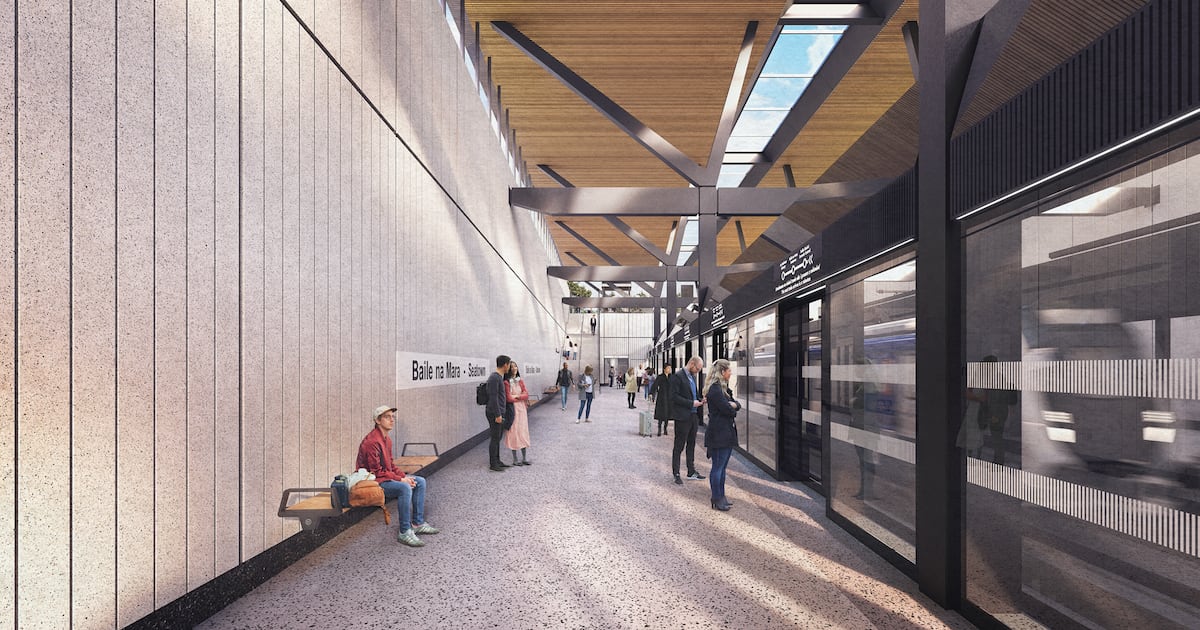The long-awaited MetroLink line, which will finally connect Dublin Airport to the city by rail, has been approved by An Coimisiún Pleanála, three years after planning permission was sought.
The 18.8km rail line, expected to cost in excess of €10 billion, was first proposed a quarter of a century ago and is anticipated to begin operations in the mid-2030s.
Travelling mostly underground, the remote controlled, driverless trains will run every three minutes from Swords in north Dublin to Charlemont close to Ranelagh in south Dublin. The route will have 16 stops serving areas including Dublin Airport, Ballymun, Glasnevin, Phibsborough and the city centre.
A trip from Swords to the city centre is expected to take about 25 minutes, with airport to the city journeys due to take 20 minutes.
Once construction starts MetroLink will be the largest infrastructure project in the State with building work expected to continue for up to eight years. However, the commission’s decision could be subject to legal challenges, and must secure final Cabinet approval, before construction can begin.
The commission’s decision to grant a railway order for the line allows State transport developer Transport Infrastructure Ireland (TII) to seek indicative tenders for its construction, before formulating a final business case which it will submit to the Government for approval to build the line. It is a this point the likely cost of MetroLink will be known.
Ahead of lodging its planning application for MetroLink in September 2022, TII had to submit a preliminary business case to Government to get approval to press ahead with the planning process. This business case had to include cost estimates, with a “risk allowance range” for inflation. At that time €9.5 billion was the midpoint of a “credible” cost range of €7.16 billion-€12.25 billion. However, a figure of more than €23 billion was also submitted to Government as the extreme upper limit of costs, if all “unknown” risks were to be eliminated.
MetroLink director Sean Sweeney on September 4th began a series of “global market briefings” to drum up interest from firms with the capacity to develop the project. The first briefing, attended by the Taoiseach and Tánaiste, was held Dublin, with similar events in Berlin, Paris, Milan, London, Vienna and Madrid held later in the month.
More than 318 parties made submissions to the board on the application ahead of the opening of public hearings on the line in February of last year. These include residents and businesses affected by the route, politicians, campaign groups, heritage bodies and State agencies, including the Office of Public Works (OPW) which had serious concerns about the impact of the proposed station at St Stephen’s Green.
A metro for Dublin was proposed in 2000 when was included in the then Government’s Platform for Change Transportation Strategy. An application for the line, then called Metro North was submitted to An Bord Pleanála in 2008 and was granted permission in late 2010.
However, the State was by that stage in the depths of the economic crisis and the Government the following year balked at approving the business case for the line which put the likely cost at €3.5 billion, and the project was shelved.
In 2015 it was reinstated, with construction scheduled to begin in 2021 with a view to delivery in 2026 or 2027. In 2018 a decision was made to combine the metro from Swords to the city with an upgrade of the Luas Green line from the city to Sandyford, then the following year that decision was reversed, and it was back to a Swords to city metro ending at the Charlemont Luas stop north of Ranelagh.

